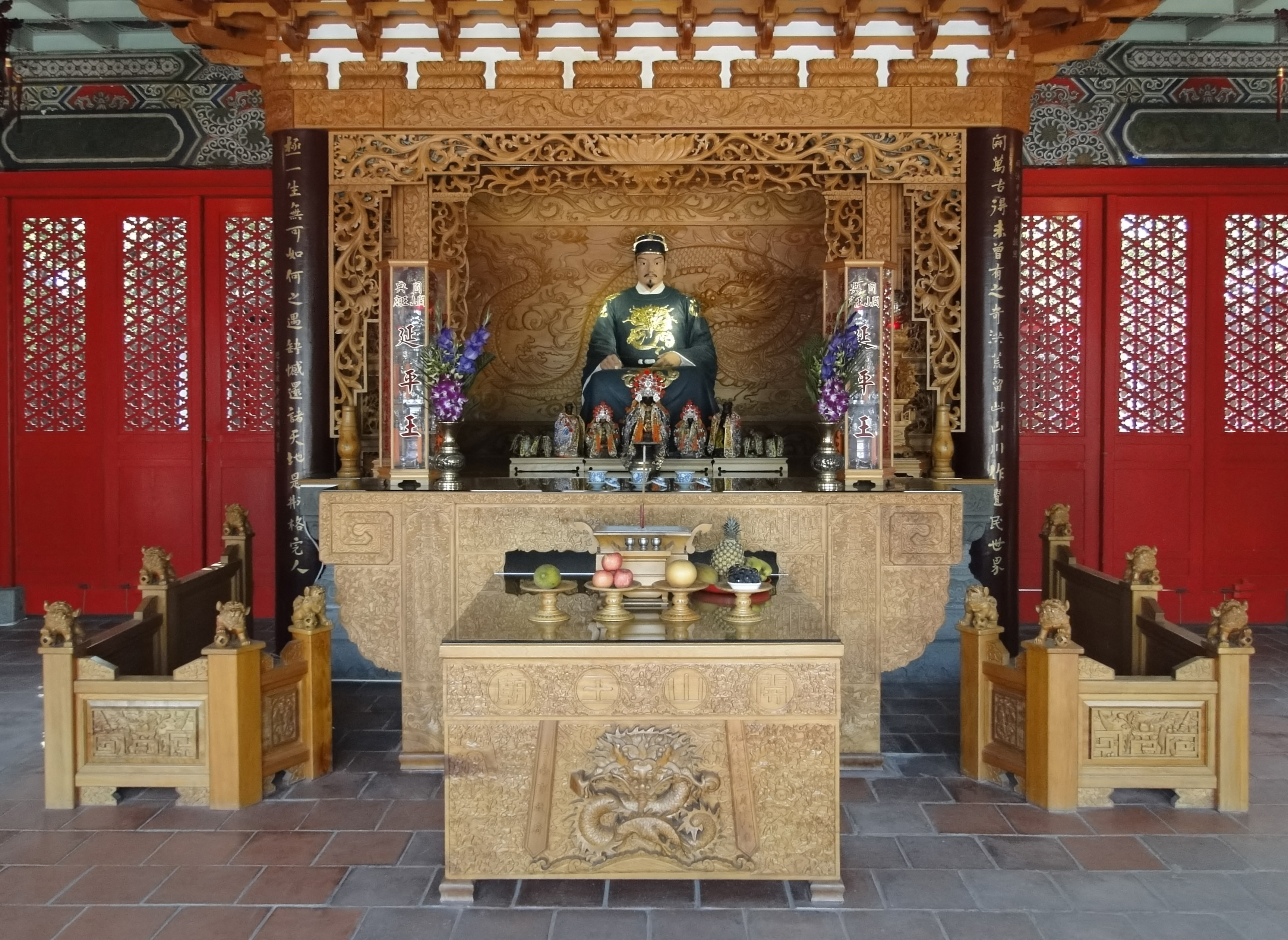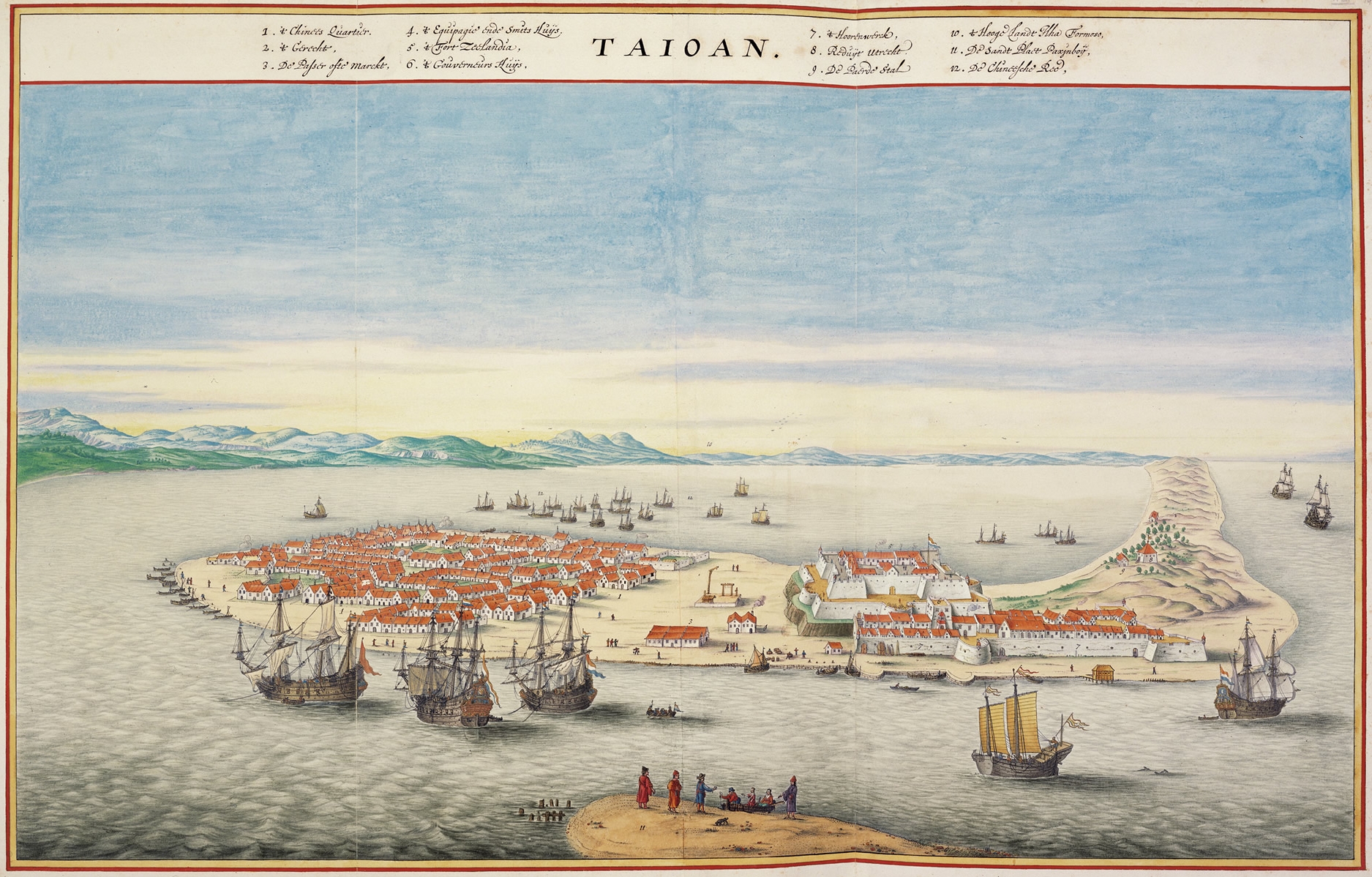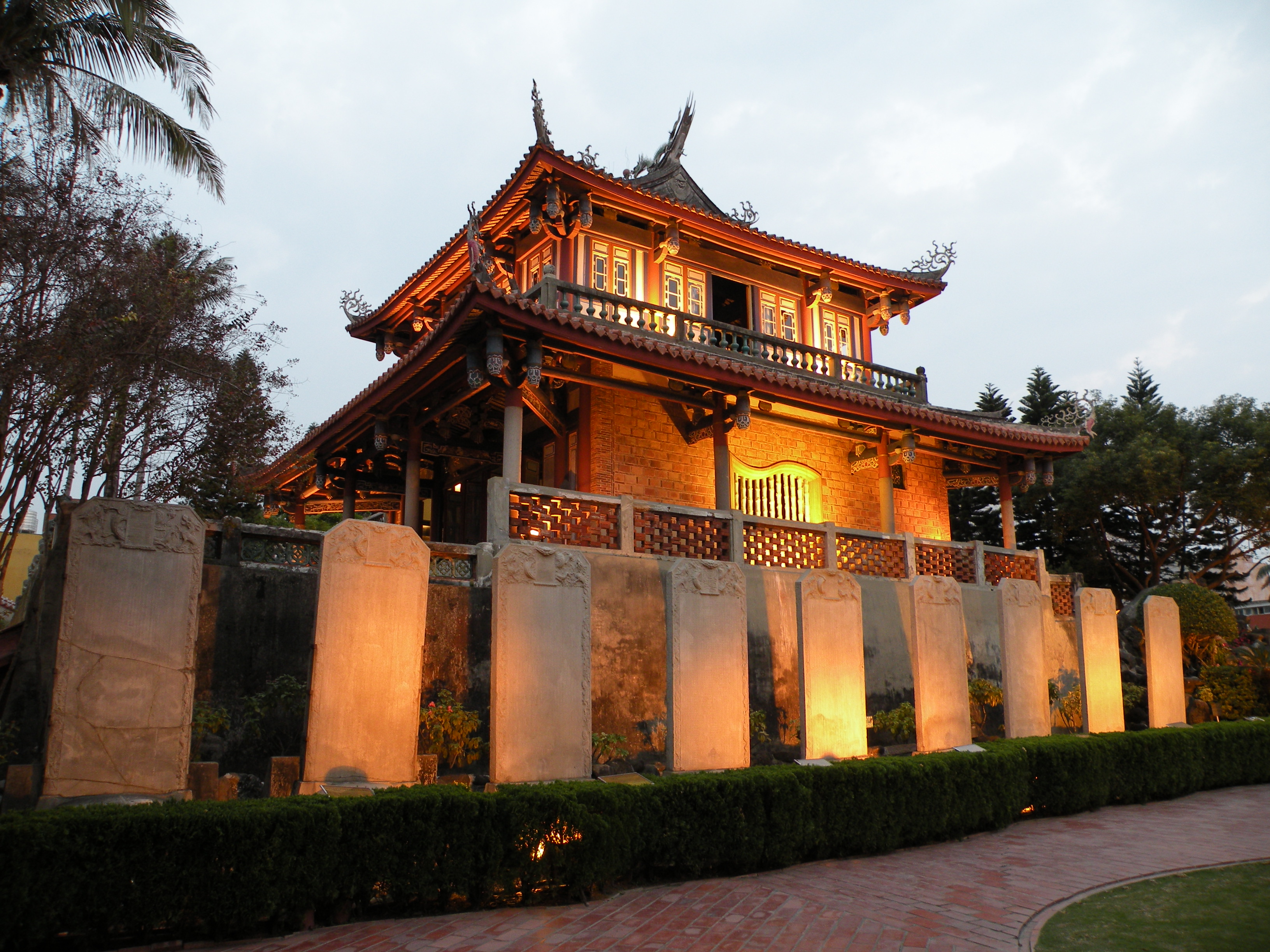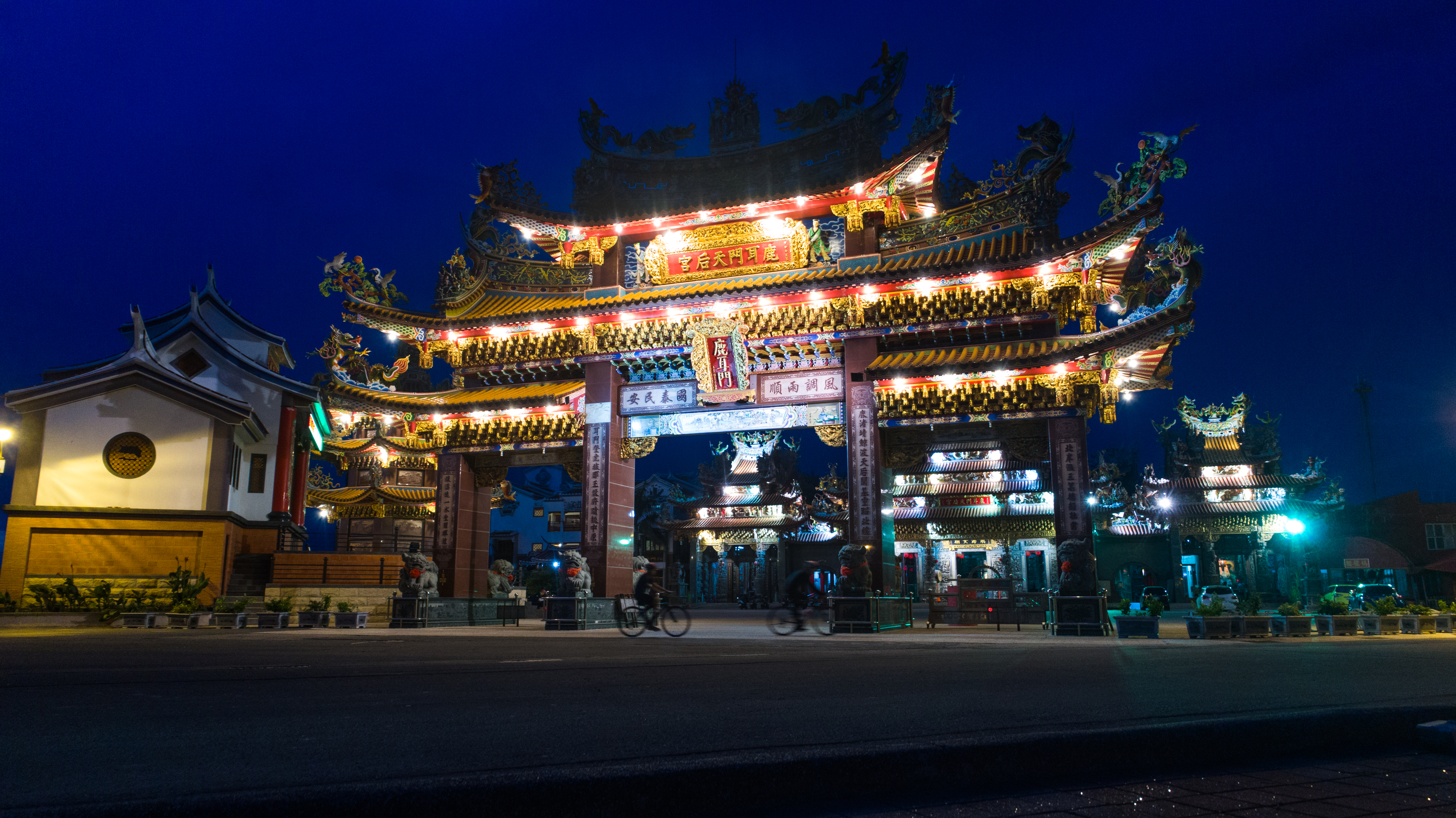History
On the Trail of Koxinga in Tainan
One of the most intriguing world figures of the seventeenth century, the warlord and Ming loyalist Zheng Chenggong (commonly known as Koxinga) changed the course of East Asian history; without him, Taiwan might well have remained a Dutch colony into the 1940s.

Koxinga statue in the Koxinga Shrine, Tainan (photo courtesy of Bernard Gagnon)
The Koxinga story starts in 1624 in two locations; on the Japanese island of Hirado Island, then an important foreign trading post, where Zheng Chenggongwas bornto a Chinese pirate/merchant and a Japanese woman; and in southwestern Taiwan – what is now the Tainan City port district of Anping – where the Dutch India Company established a colony. The Dutch would remain there until 1662, when they were expelled by Koxinga after a nine-month siege of Fort Zeelandia.

Fort Zeelandia with the adjacent town of Zeelandia, by Joan Blaeu
For the curious explorer there are traces of the Dutch-Koxinga saga well worth tracking down in modern-day Tainan. First, head to Fort Zeelandia (Ānpíng Gǔbǎo to the locals). The fort once stood on a sandspit guarding the entrance to Taoyuan Bay, but the area has silted up and the coastline is now a kilometer to the west. By looking at the paintings and models on display, you’ll get an idea of what it once looked like. Although there’s not much remaining of the original Fort Zeelandia, there are still some remnants – a section of an outer brick wall – and a modern reconstruction. It’s a pleasant place to stroll and sit, soaking in the atmosphere, and at NT$50 admission it’s very good value.


Fort Zeelandia
The coastal district of Anping rewards exploration on foot. It’s small enough to get around easily and the messy jumble of new and old, neglected and spruced up, makes for numerous interesting discoveries. If you have time, wander a little to the east of Fort Zeelandia down Yanping Street – probably the oldest street in Taiwan – and nearby lanes. This is where old Dutch houses and shops once stood.
A short walk north of the fort is the Anping Tree House, which features the Old Tait & Co. Merchant House from the mid-nineteenth century. The museum inside the building has good material on the Dutch period as well as the treat port days. The tree house name refers to an adjacent warehouse overgrown with massive old banyan trees.

Old Tait & Co. Merchant House
When Koxinga’s forces arrived in Taiwan, they caught the Dutch unaware. They were able to sail past Fort Zeelandia into Taoyuan Bay. Their first military target was Fort Provintia about five kilometers east of the fort in what is now downtown Tainan. Today a temple stands on the spot the fort once occupied. The buildings and grounds, while not spectacular, are worth visiting if you’re in the vicinity. And you might be in the vicinity to visit the Koxinga Shrine and the adjacent Koxinga Museum. En route you can stop by at the Confucius Temple.

Fort Provintia (now Chihkan Tower) (photo courtesy of Kaiko)
If you have your own transport and aren’t templed out, consider traveling to Luermen (literally: deer’s ear gate) where several temples are built on the spot where Koxinga is said to have landed with his fleet in 1661. Aboard Koxinga’s ship was a Mazu statue, and this has been housed in the Mazu Temple since it was built in 1719 (rebuilt in 1977). Another temple in Luermen of note is the small but distinctive Luermen Zhengmen Temple, featuring a deified statue of Koxinga and Western-looking “door guardian” figures.

Luermen Mazu (Houtien) Temple (photo courtesy of Guanting Chen)
To get the most out of a visit to Tainan, you should take a guidebook. Although a copy of the Taiwan Lonely Planet or Brandt guide will do the job, I recommend additional reading for a deeper appreciation. There’s The Real Taiwan and the Dutch by Menno Goedhart and Cheryl Robbins, a guidebook featuring places around Taiwan with connections to the Dutch era. For the story of the clash between Koxinga and the Dutch, Tonio Andrade’s Lost Colony is a must-read. For a fictionalised yet still highly informative account, you should read Joyce Bergvelt’s Lord of Formosa.

